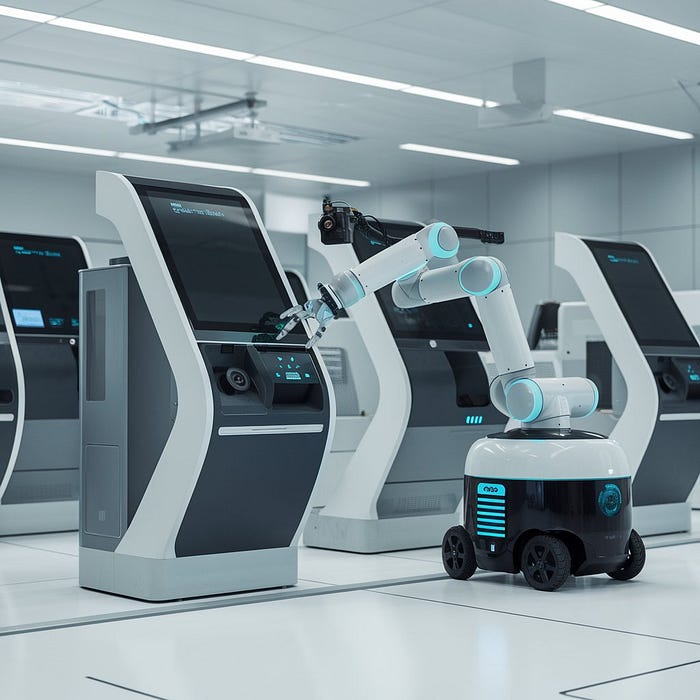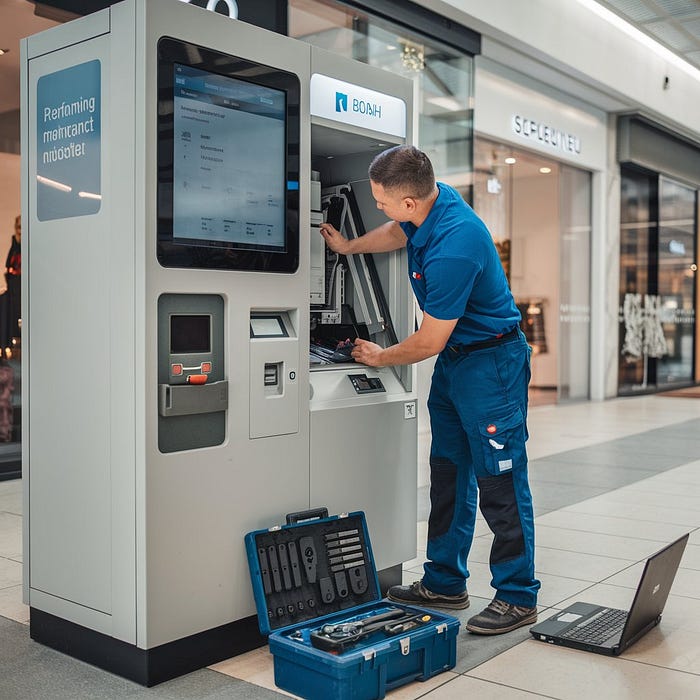Preventive Maintenance of Self-service Kiosks

In today’s digital age, self-service kiosks have revolutionized customer interactions across various industries. From ordering food at a restaurant to checking in at an airport, these kiosks provide convenience, efficiency, and a seamless user experience. However, to ensure they function optimally, preventive maintenance is crucial. Regular upkeep not only prevents unexpected downtimes but also enhances operational efficiency, reduces costs, and improves user satisfaction. This article delves into the significance of self-service kiosks and the best practices for maintaining them effectively.
Understanding Self-Service Kiosks
Types of Self-Service Kiosks
Self-service kiosks come in different forms, each designed to cater to specific needs and industries. Some of the most common types include:
- Informational Kiosks: These kiosks provide users with essential information, such as wayfinding assistance in malls or interactive directories in corporate buildings.
- Checkout Kiosks: Frequently seen in retail stores and supermarkets, these kiosks allow customers to scan and pay for items without cashier assistance.
- Ordering Kiosks: Popular in quick-service restaurants, ordering kiosks enable customers to place their orders and make payments seamlessly.
- Ticketing Kiosks: These kiosks streamline ticket purchasing for public transportation, movie theaters, and amusement parks, reducing the need for manual ticket sales.
Applications of Self-Service Kiosks
Self-service kiosks are widely used across various industries, enhancing efficiency and customer satisfaction.
- Retail: Retailers use kiosks for self-checkout, price checking, and product information, reducing wait times and improving shopping experiences.
- Healthcare: Hospitals and clinics utilize kiosks for patient check-in, appointment scheduling, and payment processing, reducing administrative burden.
- Hospitality: Hotels use kiosks for self-check-in and check-out, allowing guests to bypass long queues at the front desk.
- Banking: ATMs and self-service banking kiosks provide account services, withdrawals, deposits, and bill payments without the need for a teller.
- Transportation: Airports, train stations, and bus terminals employ kiosks for ticketing, check-in, and baggage drop, expediting the travel process.
Benefits of Preventive Maintenance
Improved Reliability and Uptime
Regular preventive maintenance ensures that kiosks remain operational, reducing downtime and preventing disruptions. Scheduled inspections help identify potential issues before they escalate into major failures, ensuring continuous service availability.
Cost Savings Over Time
Investing in preventive maintenance reduces long-term costs by addressing minor issues before they become expensive repairs. Avoiding emergency breakdowns also minimizes the need for costly last-minute repairs and replacements.
Enhanced User Experience
Well-maintained kiosks provide a seamless and efficient user experience. Customers are more likely to trust and engage with kiosks that function properly, leading to increased satisfaction and repeat usage.
Preventive Maintenance Best Practices
Regular Software Updates
Keeping kiosk software updated is critical for security, performance, and compatibility with new technologies. Regular updates help prevent vulnerabilities, enhance functionality, and improve the overall user experience.

Routine Hardware Checks
Hardware components such as touchscreens, printers, card readers, and sensors require periodic inspections to ensure optimal performance. Cleaning and calibrating these components can prevent malfunctions and extend the lifespan of the kiosk.
User Training and Feedback Collection
Training employees to recognize early signs of malfunction and encouraging users to provide feedback can help identify potential issues. Proactive engagement with users ensures continuous improvements in kiosk performance.
Challenges in Preventive Maintenance
Resource Allocation
Budgeting for preventive maintenance can be challenging, especially for businesses with multiple kiosks. Allocating sufficient funds and manpower is essential to ensure consistent upkeep and avoid service disruptions.
Staff Training and Compliance
Ensuring that employees are adequately trained to handle basic maintenance tasks is crucial. Additionally, compliance with industry regulations and best practices ensures that kiosks operate securely and efficiently.
Conclusion
Self-service kiosks have become indispensable across various industries, offering unparalleled convenience and efficiency. However, their effectiveness hinges on a robust preventive maintenance strategy. By implementing regular software updates, conducting routine hardware checks, and investing in staff training, businesses can maximize kiosk uptime, reduce costs, and enhance user experience. A proactive approach to maintenance not only safeguards operational efficiency but also ensures long-term success in an increasingly automated world.
Comments
Post a Comment